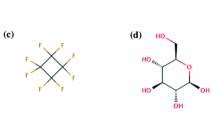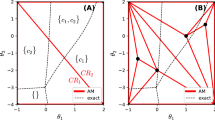Abstract
Mathematical inequalities, combined with atomic-physics sum rules, enable one to derive lower and upper bounds for the Rosseland and/or Planck mean opacities. The resulting constraints must be satisfied, either for pure elements or mixtures. The intriguing law of anomalous numbers, also named Benford’s law, is of great interest to detect errors in line-strength collections required for fine-structure calculations. Testing regularities may reveal hidden properties, such as the fractal nature of complex atomic spectra. The aforementioned constraints can also be useful to assess the reliability of experimental measurements. Finally, we recall that it is important to quantify the uncertainties due to interpolations in density-temperature opacity (or more generally atomic-data) tables, and that convergence studies are of course unavoidable in order to address the issue of completeness in terms of levels, configurations or superconfigurations, which is a cornerstone of opacity calculations.
Graphical abstract















Similar content being viewed by others
Data Availability Statement
This manuscript has no associated data or the data will not be deposited. [Authors’ comment: The datasets generated during and/or analyzed during the current study are available from the corresponding author on reasonable request.]
Notes
The total frequency-dependent opacity can be calculated as the sum of the contributions of different processes: photo-excitation (or bound-bound opacity) \(\kappa _{bb}\), photo-ionization (or bound-free opacity) \(\kappa _{bf}\), inverse Bremsstrahlung \(\kappa _{\textrm{ff}}\) (or free-free opacity) and photon scattering \(\kappa _{\textrm{scat}}\). It is then given by the following expression: \(\kappa (h\nu )=(\kappa _{\textrm{bb}}(h\nu )+\kappa _{\textrm{bf}}(h\nu )+\kappa _{\textrm{ff}}(h\nu ))(1-e^{-h\nu /k_BT})+\kappa _{\textrm{scat}}(h\nu )\). However, in some definitions of the Planck mean opacity in connection with radiation-transfer modeling, the scattering contribution is not included [30]. For simplicity here, we follow the work of Bernstein and Dyson [11] and include the scattering contribution both in the Planck and Rosseland mean opacities. Since that contribution is usually much smaller than the others (except at very high frequency), and since we are looking for bounds, such an approximation seems reasonable. We also note that a factor \(1-e^{-u}\) is missing in the denominator of the expression of \(W_P(u)\) in Eq. (24) of Ref. [11].
Setting \(f^2(u)g^2(u)=R(u)\) and \(f^2(u)+g^2(u)=\kappa (u)\) in the second inequality (26) yields
$$\begin{aligned} \frac{1}{\kappa _R}\le \frac{1}{4\mathscr {S}}\left( \int _0^{\infty } [\kappa (u)-\sqrt{\kappa ^2(u)-4R(u)}]~\textrm{d}u\right) \nonumber \\ \times \left( \int _0^{\infty }[\kappa (u)+\sqrt{\kappa ^2(u)-4R(u)}]~\textrm{d}u\right) \end{aligned}$$(42)provided that the arguments of the square roots are positive. This implies in any case
$$\begin{aligned} \kappa _R\ge \frac{1}{2\mathscr {S}}. \end{aligned}$$(40)
References
T.R. Carson, D.F. Mayers, D.W.N. Stibbs, Mon. Not. R. Astr. Soc. 140, 483–536 (1968)
B.H. Armstrong, R.W. Nicholls, Emission, Absorption and Transfer of Radiation in Heated Atmospheres (Pergamon Press, Oxford, 1972)
G.B. Rybicki, A.P. Lightman, Radiative processes in astrophysics (Wiley, New York, 1985)
W.F. Huebner, W.D. Barfield, Opacity (Springer, New York, 2016)
G. Michaud, G. Alecian and J. Richer, Atomic Diffusion in Stars (Springer Cham, 2016)
J.-C. Pain and F. Gilleron, Opacity calculations for stellar astrophysics Proceedings of the PHOST “Physics of Oscillating Stars” conference, 2-7 Sept. 2018, Banyuls-sur-mer (France). https://doi.org/10.5281/zenodo.1590773
Y. Ralchenko, Modern Methods in Collisional-Radiative Modeling of Plasmas (Springer; 1st ed. 2016)
J. Bauche, C. Bauche-Arnoult and O. Peyrusse, Atomic Properties in Hot Plasmas. From Levels to Superconfigurations (Springer, 2015)
G.B. Dyson, Project Orion (Henry Holt, New York, 2002)
J. Bernstein and F. J. Dyson, The continuous opacity and equations of state of light elements at low densities (General Atomic Report GA-848, unpublished)
J. Bernstein, F. Dyson, PASP 115, 1383–1387 (2003)
B.H. Armstrong, Astrophys. J. 136, 309–310 (1962)
T.K. Rebane, P.A. Braun, Opt. Spectrosc. 27, 465–486 (1969)
F. Weinhold, J. Chem. Phys. 54, 1874–1881 (1971)
V.S. Imshennik, I.N. Mikhailov, M.M. Basko, S.V. Molodtsov, Sov. Phys. JETP 63, 980–985 (1986)
D. Liberman, Upper limits on the Rosseland mean opacity, report LA-2700, Los Alamos Scientific Laboratory of the University of California (U.S, Atomic Energy Commission, 1962)
S.V. Molodtsov, J. Exp. Theor. Phys. 77, 406–412 (1993)
A. Bar-Shalom, J. Oreg, W.H. Goldstein, D. Shvarts, A. Zigler, Phys. Rev. A 40, 3183–3193 (1989)
G.B. Ribicki, A.P. Lightman, Radiative processes in astrophysics (Wiley, New York, 1979)
D. Salzmann, Atomic physics in hot plasmas (Oxford University Press, New York and Oxford, 1998)
J.-C. Pain, Plasma 3, 42–64 (2021)
J.-C. Pain, Plasma 5, 154–175 (2022)
H.A. Schwarz, Acta Societatis Scientiarum Fennicae 15, 315–362 (1885)
H. Bethe, E. Salpeter, Quantum mechanics of one- and two-electron atoms (Academic Press, New York, 1957)
E. Merzbacher, Quantum mechanics (Wiley, New York, 1970)
R. D. Cowan, The theory of atomic structure and spectra (University of California Press, 1981)
L. Vep\(\rm \check{s}\)tas, Ramanujan J. 27, (2012) 387–408
J.E. Bailey, T. Nagayama, G.P. Loisel, G.A. Rochau, C. Blancard, J. Colgan, P. Cossé, G. Faussurier, C.J. Fontes, F. Gilleron, I. Golovkin, S.B. Hansen, C.A. Iglesias, D.P. Kilcrease, J.J. MacFarlane, R.C. Mancini, S.N. Nahar, C. Orban, J.-C. Pain, A.K. Pradhan, M. Sherrill, B.G. Wilson, A higher-than-predicted measurement of iron opacity at solar interior temperatures. Nature 517, 56–59 (2015)
C.A. Iglesias, High Energy Density Phys. 15, 4–7 (2015)
D. Mihalas, Stellar atmospheres (W. H. Freeman, 1978)
O. L. Hölder, Nachrichten von der Königlichen Gesellschaft der Wissenschaften und der Georg-Augusts-Universität zu Göttingen (1889) 38–47
E.A. Milne, Proc. R. Astron. Soc. 43, 979–984 (1925)
R. Peterson, G. Moses, Comp. Phys. Commun. 28, 405–426 (1983)
H.A. Kramers, Phil. Mag. 46, 836–871 (1923)
G. Pólya, G. Szegö, Aufgaben aus der Analysis, vol. I (Springer, Berlin, 1925)
G.H. Hardy, J.E. Littlewood, G. Pólya, Inequalities (Cambridge University Press, Cambridge, 1934)
C.-J. Zhao, W.-S. Cheung, J. Inequalities Appl. 2013, 591–595 (2013)
J. Karamata, Acad. Serbe Sci. Publ. Inst. Math. 2, 131–145 (1948)
W.H. Young, Proc. R. Soc. Lond. Ser. A 87, 225–229 (1912)
S. Newcomb, Am. J. Math. 4, 39–40 (1881)
J. Wlodarski, Fibonacci Q. 9, 87–88 (1971)
L.C. Washington, Fibonacci Q. 19, 175–177 (1981)
L. Barabesi, A. Cerioli, D. Perrotta, Stat. Meth. Appl. 30, 767–778 (2021)
A. Berger, T.P. Hill, Stat. Methods Appl. 30, 779–795 (2020)
F. Benford, Proc. Am. Philos. Soc. 78, 551–572 (1938)
J.-C. Pain, Phys. Rev. E 77, 012102 (2008)
J.-C. Pain, High Energy Density Phys. 9, 392–401 (2013)
B.G. Wilson, F. Rogers, C. Iglesias, Phys. Rev. A 37, 2695–2697 (1988)
R.C.M. Learner, J. Phys. B: Atom. Mol. Phys. 15, L891–L895 (1982)
V.A. Dzuba, V.V. Flambaum, Phys. Rev. Lett. 104, 213002 (2010)
K. Fujii, J.-C. Berengut, Phys. Rev. Lett. 124, 185002 (2019)
M.J. Seaton, Mon. Not. R. Astron. Soc. 265, L25–L28 (1993)
J. Colgan, D.P. Kilcrease, N.H. Magee, M.E. Sherrill, J. Abdallah Jr., P. Hakel, C.J. Fontes, J.A. Guzik, K.A. Mussack, Astrophys. J. 817, 116 (2016)
C. Iglesias, F.J. Rogers, Astrophys. J. 464, 943–953 (1996)
F.J. Rogers, A. Nayfonov, Astrophys. J. 576, 1064–1074 (2002)
W. Yang, M. Li, Proc. In. Astron. Union 4(S252), 123–124 (2008)
C. Neuforge-Verheecke, J.A. Guzik, J.J. Keady, N.H. Magee, P.A. Bradley, A. Noels, Astrophys. J. 561, 450–454 (2001)
Such an observation was raised to our attention by the anonymous referee
C. Bauche-Arnoult, J. Bauche, M. Klapisch, Phys. Rev. A 20, 2424–2439 (1979)
C. Bauche-Arnoult, J. Bauche, M. Klapisch, Phys. Rev. A 31, 2248–2259 (1985)
M. Masjed-Jamei, Appl. Math. Lett. 22, 1335–1339 (2009)
H. Minkowski, Geometrie der Zahlen (Teubner, Leipzig, 1896)
G.J. Woeginger, Math. Mag. 82, 202–207 (2009)
J.L.W.V. Jensen, Acta Math. 30, 175–193 (1906)
J. Tennyson, S.N. Yurchenko, Atoms 6, 26 (2018)
J.-C. Pain, F. Gilleron, High Energy Density Phys. 34, 100745 (2020)
O. Klein, Y. Nishina, Z. Phys. 52, 853–868 (1929)
S. Plouffe, Identities inspired from Ramanujan Notebooks II, http://www.plouffe.fr/simon/identities.htmlhttp://www.plouffe.fr/simon/constants/zeta5.txt
M. Chamberland and P. Lopatto, J. Integer Seq. 14, (2011) article 11.2.5
Acknowledgements
We would like to thank Alain Fontaine, Jean-Pierre Raucourt and Valérie Tabourin for their computational support and for helpful discussions. We are indebted to the anonymous referees for helpful comments and suggestions.
Author information
Authors and Affiliations
Contributions
J-CP and PC developed the theoretical formalism, performed the analytic calculations and the computations. J-CP wrote the first version of the manuscript.
Corresponding author
Additional information
Guest editors: Annarita Laricchiuta, Iouli E. Gordon, Christian Hill, Gianpiero Colonna, Sylwia Ptasinska.
T.I. : Atomic and Molecular Data and Their Applications: ICAMDATA 2022.
Contribution of the Klein–Nishina scattering cross section to the Rosseland mean
Contribution of the Klein–Nishina scattering cross section to the Rosseland mean
We have seen that the Thomson opacity reads
Let us introduce the reduced parameter
The Klein–Nishina relativistic cross section [67] reads
If \(\gamma \ll 1\), one has
and if \(\gamma \gg 1\):
Let us assume that the relativistic effects are negligible. We can then use Eq. (4) yielding
Using the reduced variable \(u=h\nu /(k_BT)\), one has for the Rosseland mean in the case of the Klein–Nishina expression of the scattering cross section
i.e.,
Using
as well as
and
one finally obtains
one has
Rights and permissions
Springer Nature or its licensor (e.g. a society or other partner) holds exclusive rights to this article under a publishing agreement with the author(s) or other rightsholder(s); author self-archiving of the accepted manuscript version of this article is solely governed by the terms of such publishing agreement and applicable law.
About this article
Cite this article
Pain, JC., Croset, P. Checking the reliability of opacity databases. Eur. Phys. J. D 77, 60 (2023). https://doi.org/10.1140/epjd/s10053-023-00642-4
Received:
Accepted:
Published:
DOI: https://doi.org/10.1140/epjd/s10053-023-00642-4




